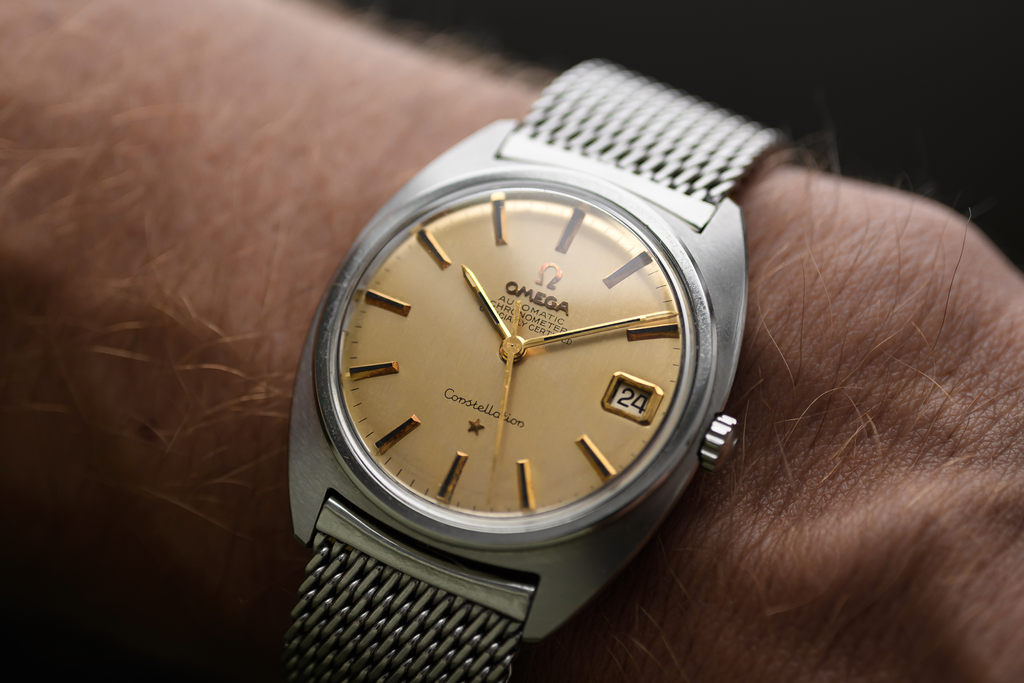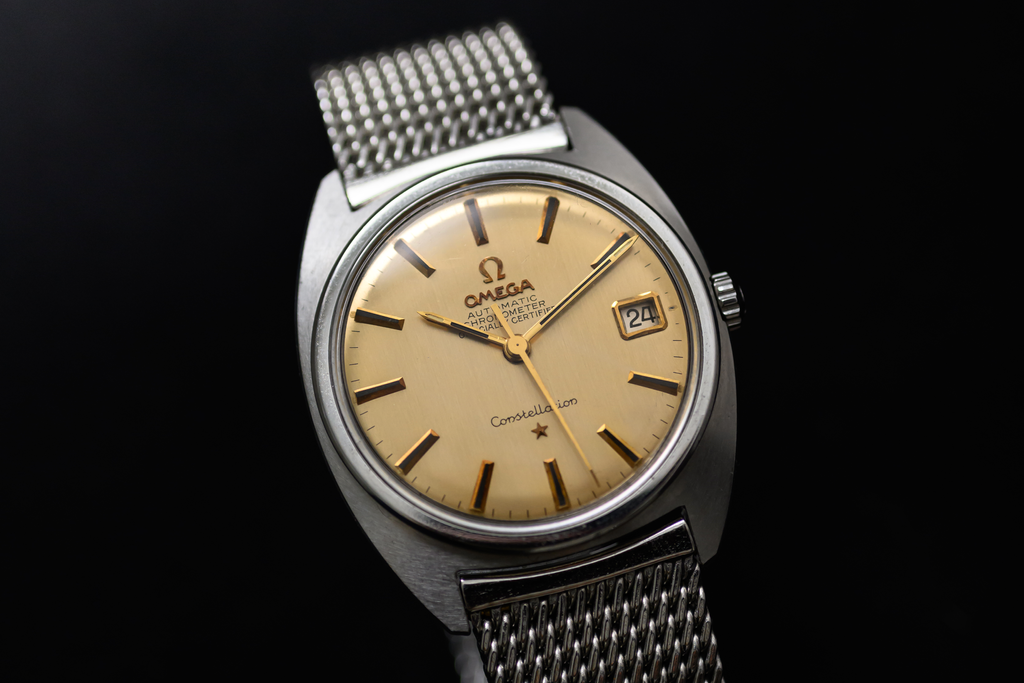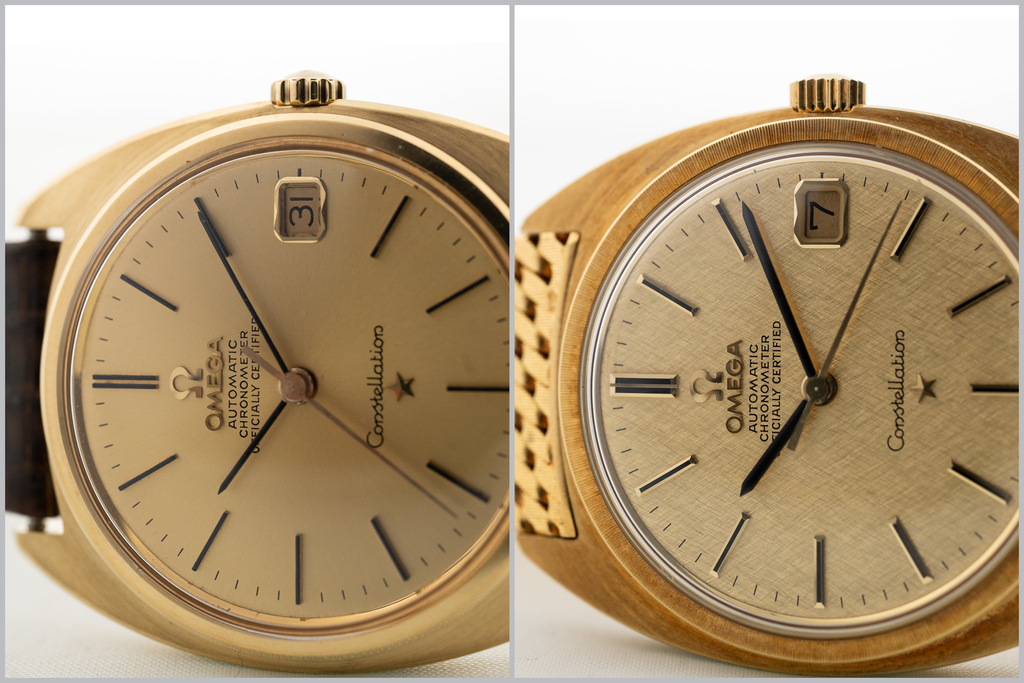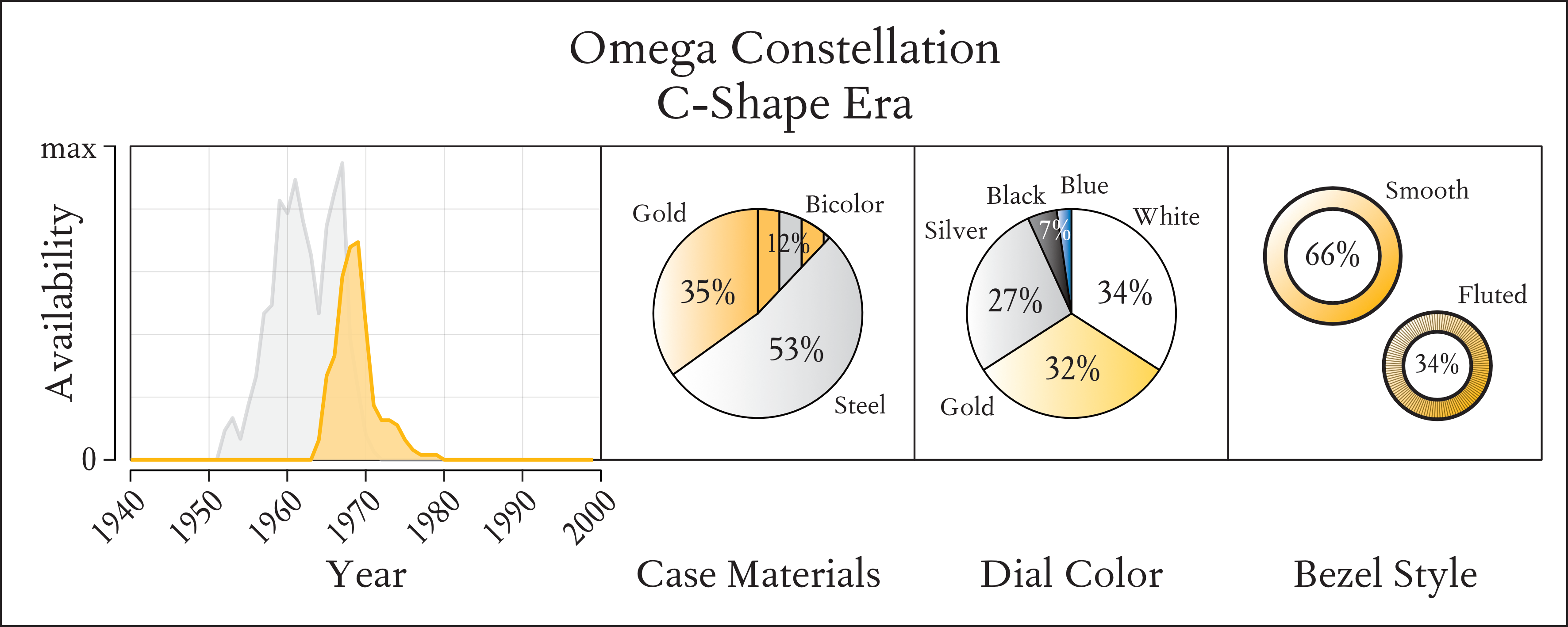Omega Constellation Reference Guide - The Era of the C Line
This time, we will focus on the Constellation, which features the "C line" case design, one of Gerald Genta's masterpieces.
Did you know that in the 1960s, Omega's Constellation collection outsold the Rolex Datejust?
The creation of the Pie Pan dial version was a major factor in Omega's success during that era.
However, Omega did a complete about-face in the 1960s, working with Gérald Genta to come up with an entirely new design.
So how did things unfold?
About C-Line Constellation
The C line was the third model in Omega's Constellation collection and was introduced in 1964.
Please see here for a summary of the first to second generations.
Omega Constellation Reference Guide - The Pie Pan Dial Era
Designed by the genius designer Gerald Genta, this model marked a revolution in Constellation design while the pie-pan dial model was still in production.
In contrast to the appeal of the Constellation's pie-pan dial, the C-line featured slim baton hands and bar indexes, giving the dial a cleaner look than its predecessor.
This was a modern approach to the Constellation concept at the time.
 Photo @goldammer.me
Photo @goldammer.me
The names of these models naturally come from the new case line.
Legend has it that Genta literally designed this model, the third in the Constellation lineup, in the shape of the third letter of the alphabet, "C."
This elongated case appearance makes it appear larger than the pie-pan Constellation, despite being roughly the same diameter.
This shape was a design that suited the times very well, when larger cases were just starting to become popular.
The C-Line era lasted for 14 years, from 1964 to 1978, and was a crucial period in the history of watchmaking.
So how many variations are there of this model, and what is it about the C shape that makes it such a classic?
Here we take a detailed look at the literature [1] and empirical data [6] to create a quantitative reference guide to this fascinating OMEGA design.

Photo @goldammer.me
reference
Overall, we can see that about seven major references appeared between 1964 and 1978.
It is important to remember that Omega has a reference system in which the bracelet watches (368.xxx) and ladies' watches (568.xxx) have different reference numbers[7].
The main evolution of the C-line Constellation has come through updates to the movement.
From the original 561 (shared with several Pie Pan dial references), to the 564 and 751 (day-date versions), to the 1000er variations (both date and day-date).
| References | Year | Date | Caliber | Bezel | material | |
|---|---|---|---|---|---|---|
| 168.009 | 1964-66 | D | 561 | Plane | Gold Linen Dial | |
| 168.017 | 1966-72 | D | 564 | Plane | Stainless steel, silver linen dial, silver central black index | |
| 168.027 | 1966-72 | D | 564 | Fluted | Thick baton hands, silver linen dial | |
| 168.019 | 1967-72 | D D | 751 | Plane | Luminous tip, silver linen dial | |
| 168.029 | 1967-72 | D D | 751 | Fluted | Luminous tip, silver linen dial | |
| 168.0056 | 1972-78 | D | 1011 | Fluted | Luminous hands at the tip, OMEGA font at 6 o'clock, color dial | |
| 168.0057 | 1972-77 | D D | 1021 | Fluted | Luminous hands at the tip, OMEGA font at 6 o'clock, color dial | |
Table 1. Common Omega Constellations from the C-line era, their main design features, and some variations.
*Most common material. D = date, DD = day-date. Linen dials are also sometimes called "silky guilloche"[1].
With each new movement, OMEGA made subtle changes to the design.
The hour markers and hands have thickened slightly over time, the fluted bezel was introduced in 1966, and the latest iterations of the C-line have seen changes to the font and text placement on the dial (see also below).

Subtle differences between the early 168.009 (1966, left) and the later 168.017 (1970, right). First, the hands and indexes are slimmer on the earlier reference. Second, the 168.017 (right) features a "sanguilloché" finished bezel, halfway between the classic flat and fluted bezels. Third, the crown is less pronounced on the later models, with more grooves. Fourth, some C-line Constellations feature a "frosted" gold dial finish (right). However, such dial variations can be found in all eras of the C-line. Interestingly, all Constellation date models of the time (including the pie pan dial versions) featured the same beveled date window. Photo @goldammer.me
About the numbers
But let's look at just how much variation there really is.
We surveyed watches on the market to further quantify what options are available and how frequently they are found[6].
Here we look specifically at the materials used, the bezel style, the dial texture, and the color.

Figure 1. A quantitative guide to the Omega Constellation C-Line, showing market-wide availability (gold for the C-Line, grey for the Pie Pan) on the left, as well as the distribution of case material (middle left), dial color (middle right), and bezel style (right).
168.017 1966-72 D 564 Flat Stainless steel, silver linen dial, silver central black index 168.027 1966-72 D 564 Fluted Wide baton hands, silver linen dial 168.019 1967-72 DD 751 Flat Luminous tips, silver linen dial 168.029 1967-72 DD 751 Fluted Luminous tips, silver linen dial 168.0056 1972-78 D 1011 Fluted Luminous tips, OMEGA font at 6 o'clock, colour dial 168.0057 1972-77 DD 1021 Fluted Luminous tips, OMEGA font at 6 o'clock, colour dialWhen it comes to absolute numbers, two very interesting patterns emerge.
First, most C-line Constellations have been available since the late 1960s, indicating that the later references are either less sought after today or simply not produced as often.
Secondly, the C-line is less readily available than its Pie Pan dial predecessor.
Combine this with current vintage prices and you can see why the Pie Pan models are more highly valued by collectors and enthusiasts.
Material and color
Overall, we see that clean design elements dominate.
In terms of material, over 53% of the C-line is made of steel, while the Pie Pan dial is only about 38%.
Additionally, 61% have light dials (silver or white), compared to 34% for gold and 7% for black and blue combined.

Photo @goldammer.me
OMEGA introduced texture into their new designs, knowing that their customers at the time were looking for something a little more sophisticated.
Approximately 34% of these C-line Constellations had a fluted bezel, approximately 36% had this stunning frosty dial pattern, and 22% had both a bezel and dial texture.
summary
Taking all this information into consideration, there is no doubt that the C-line is a standalone piece of Omega history.
It is not just a successor to the outstanding design of the Pie Pan dial Constellation, but it is something entirely new, with its own story.

Bezel texture...Check Dial texture...Check Wrist presence...Double check Photo @goldammer.me
If anything, this third generation is a shy, minimalist model that could be considered the younger brother of the pie-pan Constellations.
The understated markers, hands and ultra-slim bezels lend themselves to a commanding presence on the wrist along with the case, while leaving much of the dial to these pieces.
From a design standpoint, it's a very fresh and contemporary approach that OMEGA has taken with this model.
Finally, what connects the Pie Pan dial model and the C-Line Constellation, other than their designs?
It's a simple concept: precision and accuracy.
And the fact that they were able to apply this idea to a completely different frame, without being bound by past designs, is a clear testament to this fundamental principle.
Staying true to one dimension that is important to the brand is what makes these timepieces stand out from the rest.
References
[1] C-Shape Omega Constellation; Desmond, Omega Constellation Collectors;
http://omega-constellation-collectors.blogspot.com/constellation-c-shape
[2] A History Of The Omega Constellation, From 1952 To Today; Jack Forster, Hodinkee;
https://www.hodinkee.com/articles/stellar-history-of-the-omega-constellation
[3] History of the Omega Constellation Collection - In-Depth; Rebecca Doulton, Monochrome;
https://monochrome-watches.com/history-of-the-omega-constellation-in-depth/
[4] The Pursuit of Timekeeping Accuracy: Omega Constellation; Anthony Tyme, Vintage Portfolio;
https://www.vintage-portfolio.com/de/the-pursuit-of-timekeeping-accuracy-omega-constellation/
[5] When Did Watches Start to Get So Big?; Marcus Siems, Goldammer Vintage Watches;
https://goldammer.me/blogs/articles/history-watch-size
[6] ~50,000 Watches + 520 Constellations from Chrono24, extracted 2020 Nov. 29th and Jan. 6th 2022; Karlsruhe, Germany;
[7] An Overview of Omega Reference Codes for Wristwatches; Old-Omegas;



